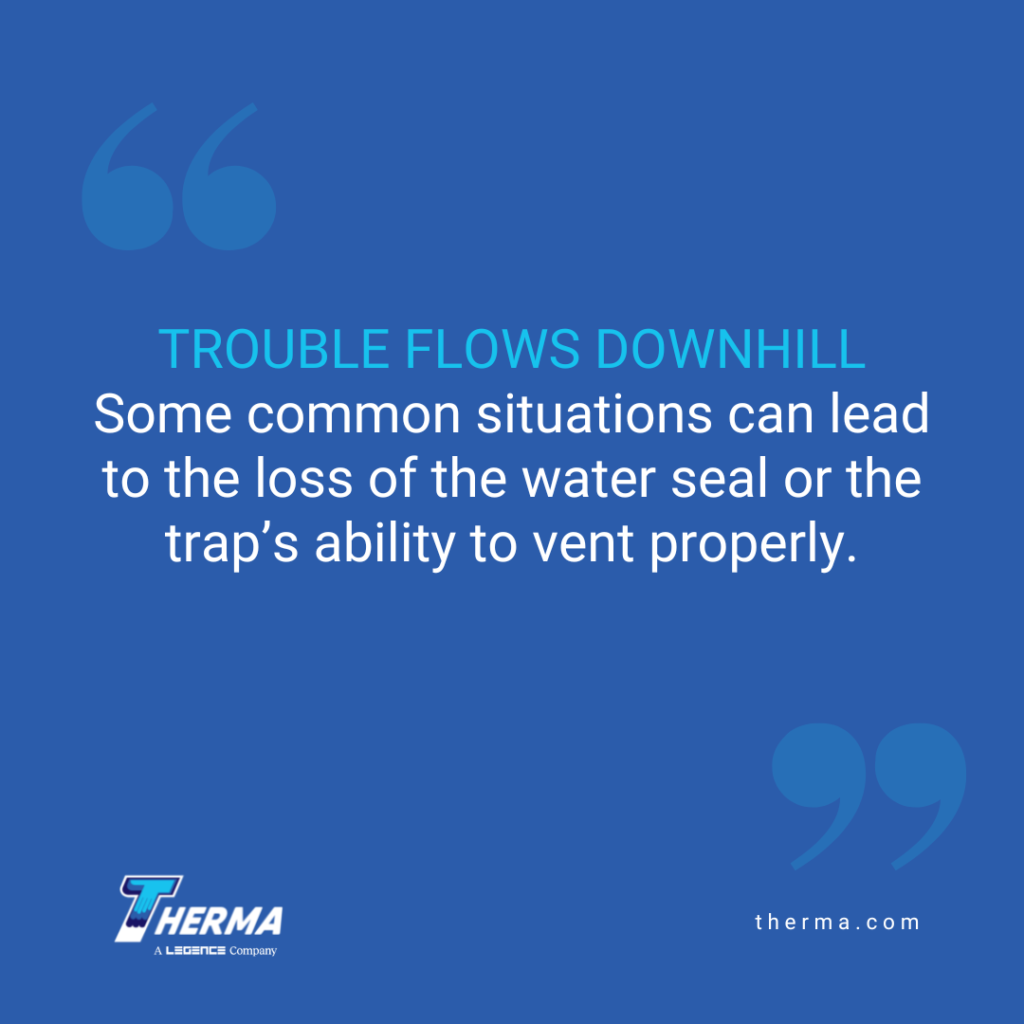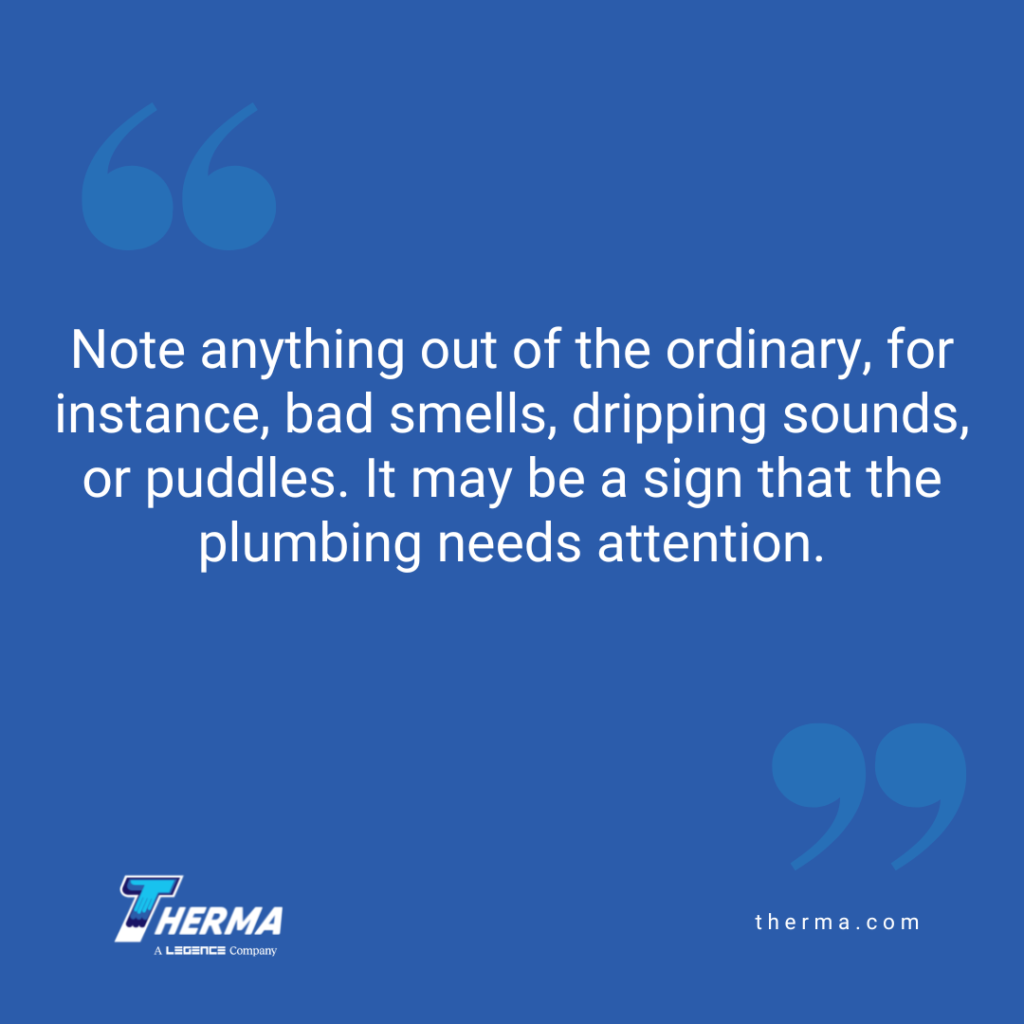by Patti Dees
The p-trap is one of the most common types of traps used in plumbing. Understanding its purpose and how it functions sheds light on ways to maintain a safe and pleasant environment for occupants. Add a few simple tasks to maintenance routines to ensure traps can do their jobs, making everyone happier and healthier.
What Is a P-Trap?
Credited to Thomas Crapper in the late 19th century, the p-trap is an ingenious low-tech piece of plumbing that makes the modern world a lot less smelly (and safer).
Named for its shape that resembles the letter P, a u-bend is attached to a length of pipe. The straight portion of the p-trap is usually 4 inches or more and attaches to the sewage drain line and vent.
The u-bend traps water to create a seal that blocks sewer gases from flowing back into the occupied space. These sewer gases smell. More importantly, they can contain contaminants, and in extreme cases, displace oxygen leading to suffocation.
While the shape stays the same, the size of a p-trap depends on its use and the size of the connecting fixture. Appliances and fixtures which have a higher flow rate or see more frequent use require a larger p-trap. For instance, a residential kitchen sink will need a smaller p-trap than a commercial kitchen sink that sees frequent use for long periods of time, even if the sinks are the same size.
Trouble Flows Downhill
Some common situations can lead to the loss of the water seal or the trap’s ability to vent properly.
- P-traps, drain lines, and vent lines can clog.
- Water evaporates, even inside plumbing.
- Plumbing occasionally leaks.
- Improperly installed traps that are not vented will not seal properly, if at all.
The function of a p-trap depends not only on its ability to maintain the water seal but also to vent excess gases. The vent helps maintain a desired pressure range within the system. It prevents a vacuum from forming that would draw the water seal from the u-bend, flushing it into the drain line with the rest of the water, and provides an outlet for any gases which may build up in the system.
Fixtures that undergo extended periods of disuse lose their seal. As air and gases exit the vent, water vapor is drawn from the trap. Eventually, it will dry out enough to become ineffective, allowing sewer gasses to enter the building.
The u-bend catches more than just water. Small items or debris that fall through a fixture’s drain can become lodged. As debris accumulates in the u-bend, less space is available for water to create a seal. Additionally, what water there is in the trap keeps the debris moist, which encourages microbial growth.
If pipes develop a leak, especially around the trap, the seal may never be fully flushed or refilled. Not only will facilities face potential water damage from the leak, but they may face poor indoor air quality (IAQ) issues.
Taking Charge
Little things like the “lowly” p-trap can have a huge impact on the comfort and health of occupants. Fortunately, there are a few things that can help keep the trap working like a charm.
- Periodically clean the drain lines, including the trap, and check that vent lines are clear.
- Don’t leave water fixtures unused for extended periods. Run water through sinks, tubs, showers, toilets, etc. if the building has been closed or an area experiences reduced occupation.
- Note anything out of the ordinary, for instance, bad smells, dripping sounds, or puddles. It may be a sign that the plumbing needs attention.
While it is tempting to ignore plumbing until it is too late, it is never a good idea. Reach out to Therma to find out how to keep your plumbing in good order. A little attention before there is a problem with the p-trap can help protect occupants from odors and a potentially dangerous environment.
Patti draws on her background as a chemical engineer to share information with readers on technology, manufacturing, and construction.
Sources
SFGATE – How to Use S-Traps or P-Traps in Plumbing
Plumbing Lab – What Is A P-Trap? (Sizes, Uses, Diagrams For Plumbing)
The Engineering Toolbox – DFU – Drainage Fixture Units









